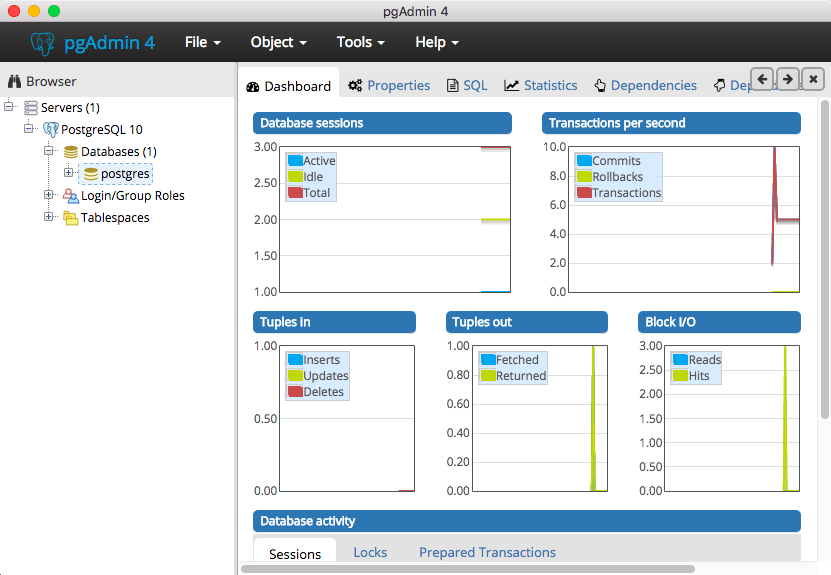

So, you need to connect to another database and rename it from that database. It is not possible to rename the current database.
Create new database in postgres code#
RENAME TO new_name Code language: PostgreSQL SQL dialect and PL/pgSQL ( pgsql ) The following ALTER DATABASE RENAME TO statement renames a database: ALTER DATABASE database_name

Note that only superusers or database owners can change these setttings. To change the attributes of a database, you use the following form of the ALTER TABLE statement: ALTER DATABASE name WITH option Code language: PostgreSQL SQL dialect and PL/pgSQL ( pgsql )
Create new database in postgres how to#
PgAdmin v4 and PostgreSQL Server v12.Summary: in this tutorial, you will learn how to modify existing databases by using PostgreSQL ALTER DATABASE statement.


You are Now Prepared to Write Your First SQL Query using the pgAdmin Query Editor in the Next Section Make sure your Query Editor Window Pane at the top right has the correct in use, which is:.You should now see "Tables (8)", click the arrow so that it points DOWN and you should see all 8 Tables in your CABBI Database.Now that you have restored the file, right click on the "Tables" icon/text and then click "Refresh".Once you have successfully restored the file, you shoudl receive a similar "SUCCESS" message in the bottom right corner.Now you should see the *.sql.backup file go through the "Restore" operation, this may take up to a few minutes to complete.Now that you have the proper *.sql.backup file selected, click the available "Restore" button.Highlight that file with a left-click and the "Select" button shoudl turn a darker blue color.Locate the *.sql.backup file that you downloaded / were provided.Click on the "3 dots" to Select the *.sql.backup File that you were provided.You will need to right-click on the CABBI Database icon/text in the DB Browser pane on the right.You should have been given a link for downloading the CABBI Database *.sql.backup file.Restore the CABBI Database from a SQL BACKUP File Observe the Query Tool window that is now opened in the right frame of the pgAdmin 4 Web GUI as shown below:.Right-click/Option-click on "Tables" and then click the "Query Tool." option from the menu, as shown below:.Server > PostgeSQL 12 > Databases > CABBI > Schemas > public > Tables Navigate the DB Browser Tree as show in the image below:.You should now see the following displayed below in the Database Components section in the DB Browser frame.Next, we are going to create our first database and name it "CABBI", like so:.When you see the menu below, hover over "Create >" and click on "Database." Right-click/Option-click on the only server you should have available in a fresh installation of the PostgreSQL bundle: Now that you have installed PostgreSQL Server and the pgAdmin 4 GUI Client Tool, let's created the CABBI Database. Creating a new Database on the localhost PostgreSQL Server


 0 kommentar(er)
0 kommentar(er)
